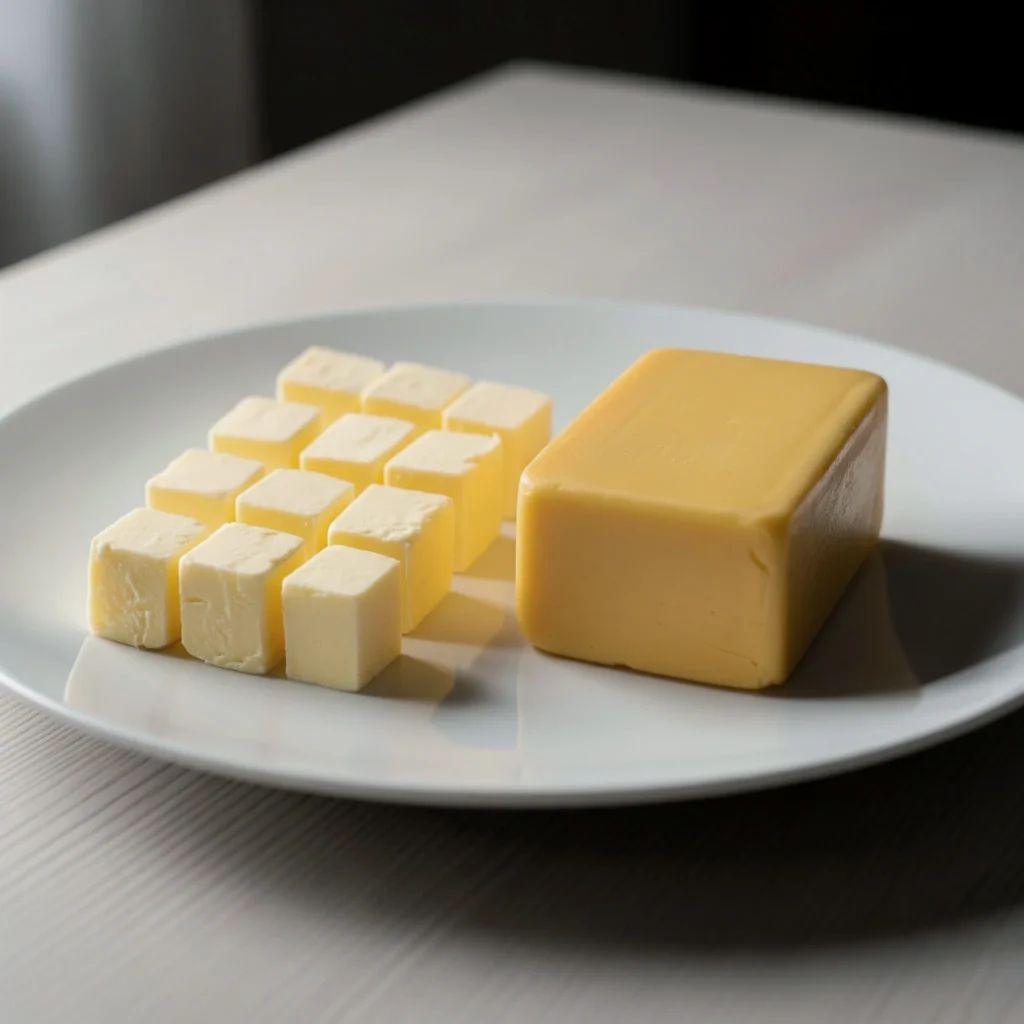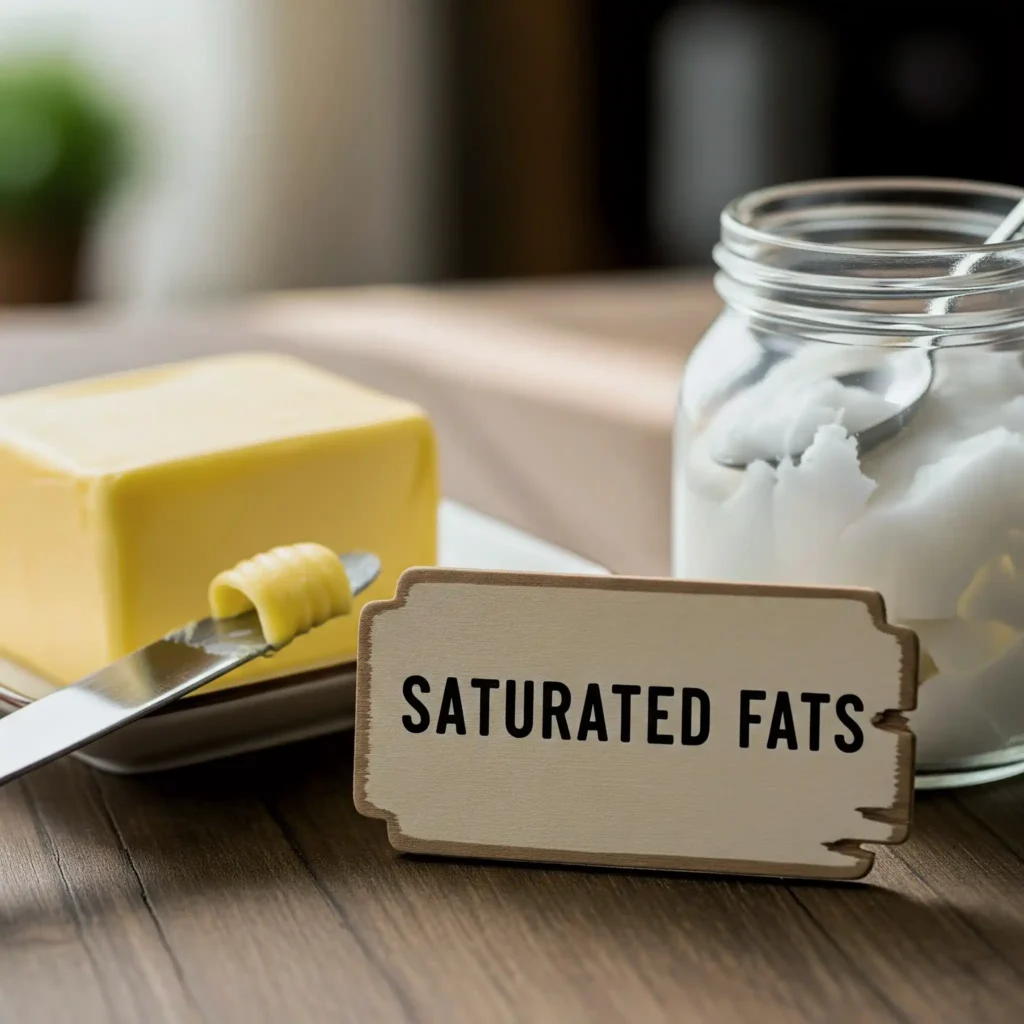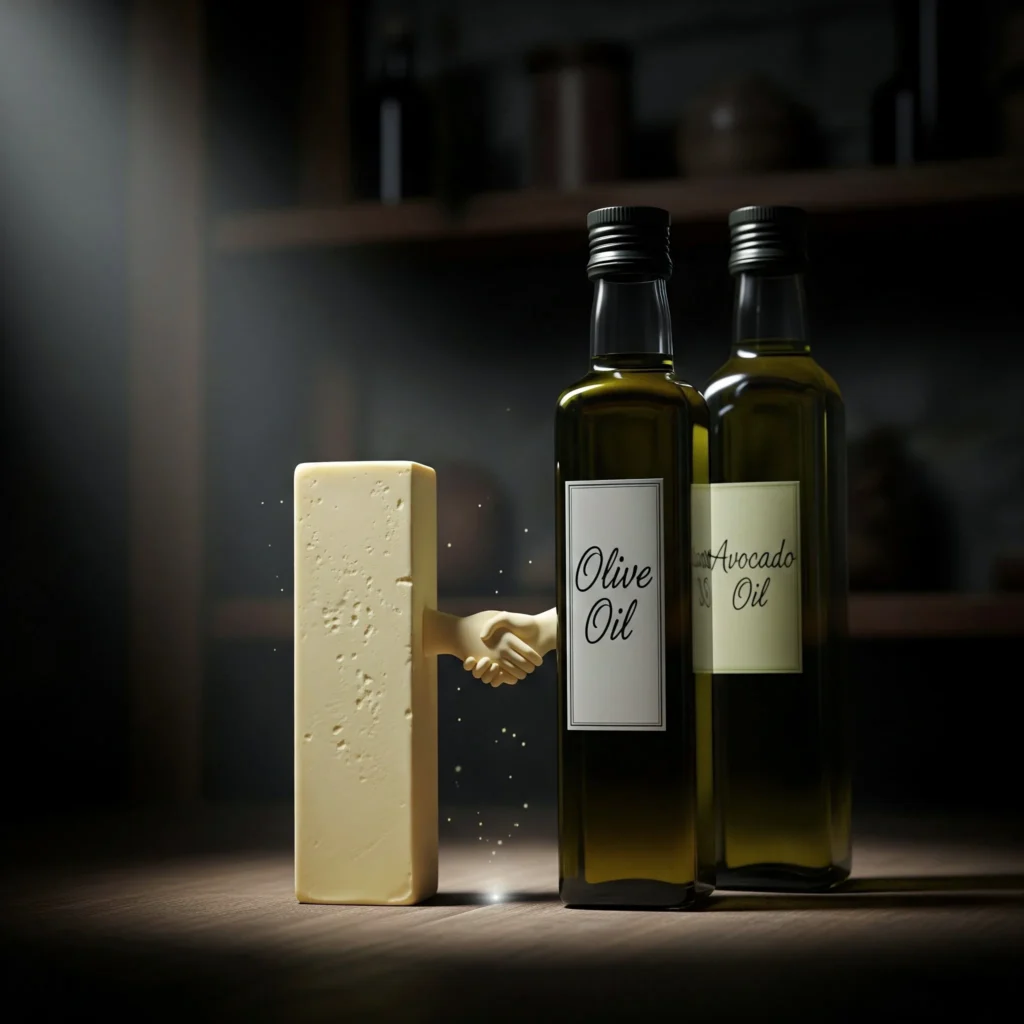
For anyone who steps into a kitchen, the differences between butter and margarine can be confusing.
If you don’t have a basic knowledge of gastronomy, you might even find yourself asking:
“Should I use butter or margarine?
Why is margarine so much cheaper if both are solid fats?”
But there’s no need to worry.
In this article, I will examine butter and margarine from every angle, from their chemical structures to their health effects.
We’ll also cover the question, “What are saturated and unsaturated fats?”
So, let the comparison begin between margarine and butter!
The Differences Between Saturated and Unsaturated Fats

Before we dive into our main topic, we need to fully understand saturated and unsaturated fats.
1. What Are Saturated Fats?

Saturated fat is a type of fat – mostly from animal sources – that is solid at room temperature.
Butter, tallow, and some tropical oils (like coconut oil) fall into this category.
In natural saturated fats, we see single bonds between carbon atoms.
This results in a straight and tightly packed fatty acid chain, which distinguishes them from liquid oils.
However, despite their natural origin, we should avoid consuming too much of this type of fat!
An excessive intake of saturated fat can lead to an increase in bad cholesterol (LDL).
Thus, it contributes to various cardiovascular diseases.
2. What Are Unsaturated Fats?

Unsaturated fat is a type of fat, generally from plant sources, that is liquid at room temperature.
Olive oil, corn oil, sunflower oil, hazelnut oil, and sesame oil are included in this category.
Unlike saturated fats, there is one or more double bonds between the carbon atoms in the fatty acid chain.
This makes the structural chains more flexible and helps unsaturated fats remain in a liquid state at room temperature.
It’s also important to remember that unsaturated fats are divided into two groups:
Monounsaturated and polyunsaturated fats.
To keep things simple, here are a few key benefits of unsaturated fats:
- They support cardiovascular health by increasing good cholesterol (HDL) in the body.
- They contain valuable fatty acids that can reduce the risk of inflammation and play a role in maintaining cell structure.
Is Margarine a Saturated Fat?

Most margarine is made by partially hydrogenating some unsaturated fats to make them saturated.
Therefore, margarine is not categorized as a “saturated fat” on its own.
In short, margarine is a mixture of saturated and unsaturated fats, depending on its content.
Also, It generally contains less saturated fat compared to butter.
Now that we have the basic fat information in our pockets, let’s get to know butter and margarine more closely.
What Is Butter and Why Is It Preferred?

Butter is a natural dairy product obtained by mechanically churning milk cream.
Note: Milk cream separates from water, milk solids, and milk fat.
Chemical structure of butter is approximately 80% fat, 16% water, and the rest consists of milk proteins and lactose.
It also contains fat-soluble vitamins like A, D, E, and K.
The feature that really makes butter stand out is that it’s produced through a natural fermentation process or mechanical churning.
Therefore, it contains no added additives (except for industrial production) and has a unique aroma.
When spread on bread or added to sauces, it adds richness to the recipe.
Of course, because butter contains a large amount of saturated fat, consuming too much of it can raise LDL cholesterol (bad cholesterol).
However, it does not contain trans fats and is generally preferred over margarine.
What Is Margarine and Is It Healthy?

Margarine was developed in 1869 as a cheap alternative to butter.
It’s a product obtained by processing vegetable oils under high pressure and heat.
The hydrogenation process, which partially saturates unsaturated fats, is what makes margarine solid.
However, because trans fats can form during the hydrogenation process, this makes margarine a controversial product from a health perspective.
Although many brands have reduced their trans fat content, margarine still contains additives and colorants.
For example, some margarines have butter flavor added to give a natural impression.
Scientific research on the harmful effects of margarine has clearly shown that trans fats can lead to hardening of the arteries and cardiovascular diseases.
On the other side of the coin, everyone spreading margarine on their bread at breakfast means low cost and high profit for the producers.
A truth scarier than any gastronomy story, isn’t it?
Final Thoughts

To understand the differences between butter and margarine, you need to examine their production processes and health effects.
Butter stands out with its natural structure, aroma, and nutritional value.
On the other hand, margarine is criticized for being industrial and for the risk of trans fats.
Beyond everything else, unsaturated liquid oils like olive oil are healthier than both of these saturated fats.
However, when consumed in moderation, butter is a reliable kitchen companion for conscious consumers.
As for margarine, we should consume it with health risks in mind.
And we should not be fooled by its cheap price or the “light” image in advertisements.
So, which one do you choose?
Continue your gastronomic journey with “Are Robot Chefs Changing the Taste?. 😉
Cafer Can Yeşilyurt
Helpful Resources